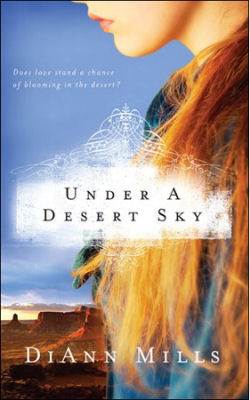
DiAnn Mills believes her readers should “Expect an Adventure.” She is a fiction writer who combines an adventuresome spirit with unforgettable characters to create action-packed novels. Her books have won many awards through American Christian Fiction Writers, and she is the recipient of the Inspirational Reader’s Choice award for 2005, 2007, and 2010. She was a Christy Award finalist in 2008 and a Christy winner in 2010. DiAnn is a founding board member for American Christian Fiction Writers, a member of Inspirational Writers Alive, Advanced Writers and Speakers Association, and is the Craftsman Mentor for the Christian Writer’s Guild. She speaks to various groups and teaches writing workshops. DiAnn and her husband live in Houston, Texas. Visit her website at: www.diannmills.com or find her on Facebook at http://www.facebook.com/diannmills |
|
DiAnn DirectPlots That Dance |
|
|
The plot is the story idea. How will the characters achieve their goals and change and grow along the way? Will a writer’s story dance with the stars? The dance of superb writing requires two partners: strong characterization and an exceptional plot. Plot comes out of character when the writer establishes the wants and needs of the protagonist and antagonist. Motivation draws characters into opposition, tension, and conflict, and the reader is swept away into the pages of your novel. In a sense, a writer invites the reader to a ball. The hook is the invitation, a subtle promise that every word in her book is as powerful as the opening line. Take a few minutes to read the hooks of some of your favorite novels. Did it raise a question or establish a curiosity that caused you to continue reading? Stress, Tension, and
Conflict That is stress! The lights flash on in a whoosh. The conductor taps his baton to signal the orchestra’s attention. Everyone on the dance floor moves back. All eyes are on the dancer and your character. “I don’t know how to dance,” she says. He squeezes her hand. “All women say that.” The music begins, her heart pounds, and her knees shake. The dancer smiles at her. “Don’t make me look bad.” That is tension! Three steps into the dance, your character squishes the toes of the dancer. She swallows hard and mumbles an apology. The idea of stumbling over the dancer’s feet for the entire song makes her ill. The dancer scowls. “You’ll pay for this.” “I warned you I couldn’t dance.” The dancer tightens his grip. “Don’t threaten me,” she says. “Would you like for me to call security?” That is conflict! Conflict In everyday life, we normally avoid conflict. It’s frustrating, interferes with our plans, and generally complicates life. But we must have it in our stories. Conflict can be:
Another person Nature
Physical Mental Spiritual In the novel, the conflict must be compelling and, more important, the reader notes high stakes and a great possibility of failure. Force readers to engage with the character’s emotions: draw them into the thicket or down an icy mountain slope. Shock them. Terrify them. Make them laugh and cry. Give them a deadline, and stack the odds against them. Reward them, then thrust them into another conflict with seemingly impossible goals. Draw out every emotion possible. Internal conflict needs to be as strong as the exterior. The issues can be mental, emotional, or spiritual. Often these are problems the characters don’t want others to know about and are critical in the black moment. Internal conflict reveals the character’s motivation. For instance, in a romance, a hero’s goal may be to win the girl. His exterior conflict is that he can’t ask her out because she has a boyfriend. But his inner conflict may be a terrible fear of rejection, because his parents abandoned him when he was young. |
Every page of the story must have some type of conflict and the reaction and response must contain strong emotions. The protagonist should initiate action, not play the victim. The character is in a difficult situation, and the plot/story is about the character overcoming obstacles to reach the goal. Scenes
and Sequels A copyeditor asked me these
questions, which are essential to writing tight scenes. What
is the POV character’s goal or problem?
What does the POV character learn that he/she didn’t know before? What backstory is revealed? (Try not to insert for the first fifty pages other than a phrase or an allusion to backstory.) How are the stakes raised? Every scene has a POV character stepping into action with a goal, a conflict, and a disaster (high stakes). A disaster doesn’t have to be earth-shattering but something that stops the character from achieving his goal. It’s written in short, quick sentences. This is also a crucial spot to deepen characterization. Character deepens when faced with adversity. We learn to trust or not to trust, according to the character’s response. Everything the protagonist does to make things better actually makes things worse. The sequel is the POV character’s internal response to what has previously happened. The sequel is the “catch your breath” portion. It allows the POV character to work through what just happened to or about him, and in today’s novels this may be a single line of inner dialogue. It is a pondering of his dilemma, making a decision, and going forward with a new plan/goal. Many times there are two or three scenes before the sequel. (New writers often make the mistake of overwriting the sequel.) Keep this portion clear and concise with emotion. Consider when you read. Where do your eyes go? Do you have a tendency to skip over the lengthy paragraph or paragraphs and set your eyes on the white space—dialogue, where the action occurs? Do we want our readers to be skippers? Or do we want our readers not to miss a single word? For example. Jane, a police officer, races down the expressway after a suspect. She increases her speed, determined to catch him. He weaves in and out of traffic, and Jane continues her pursuit. Her car swerves out of control and heads for a concrete embankment. She is powerless to stop the collision. The writer has given Jane a goal, a conflict, and a disaster. The sequel to this scene would
not be: I
should have picked up the dry
cleaning.
I forgot to complete yesterday’s paperwork. Did I remember to put on deodorant this morning? Absolutely not! The sequel would most likely be: Jane slammed on her breaks. In those two short sentences, she had a reaction, a dilemma, and a decision. This is our stopping point for
this month. If you’d like more information about plotting, take a look
at the following how-to books. Plot
and Structure (James
Scott Bell)
How to Grow a Novel (Sol Stein) Techniques of the Selling Writer (Dwight Swain) Writing the Breakout Novel and Writing the Breakout Novel Workbook (Donald Maass)
Next month we’ll continue the dance of character and plot by exploring the necessary ingredients for an irresistible beginning, a gripping middle, and a powerful ending to story. Until then, keep practicing those dance steps! Under a Desert Sky, Summerside, June 2011 
|
|
|
|
|
|
|









 We
all desire our novels to dance before an editor’s expert eye. Our
characters may be colorful, compelling, and credible. Our setting may
be so thoroughly researched that we know the area inch by inch. But if
our novels lack a substantial plot, the story will never step in time
with the publisher’s list of new releases. This month we’ll explore
Part I of a two-part series about plotting.
We
all desire our novels to dance before an editor’s expert eye. Our
characters may be colorful, compelling, and credible. Our setting may
be so thoroughly researched that we know the area inch by inch. But if
our novels lack a substantial plot, the story will never step in time
with the publisher’s list of new releases. This month we’ll explore
Part I of a two-part series about plotting.